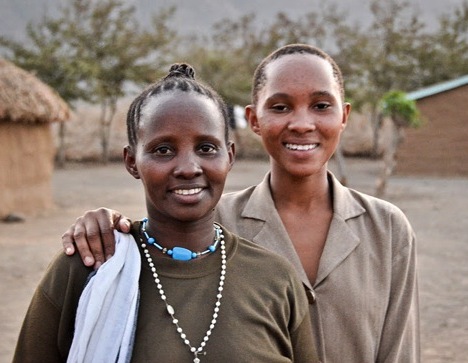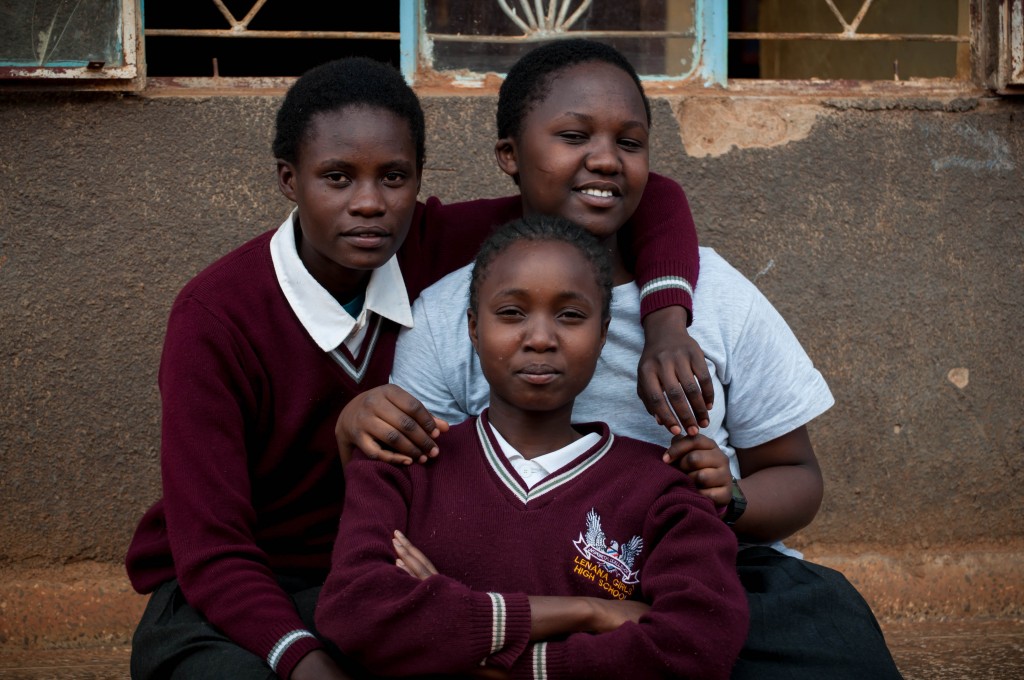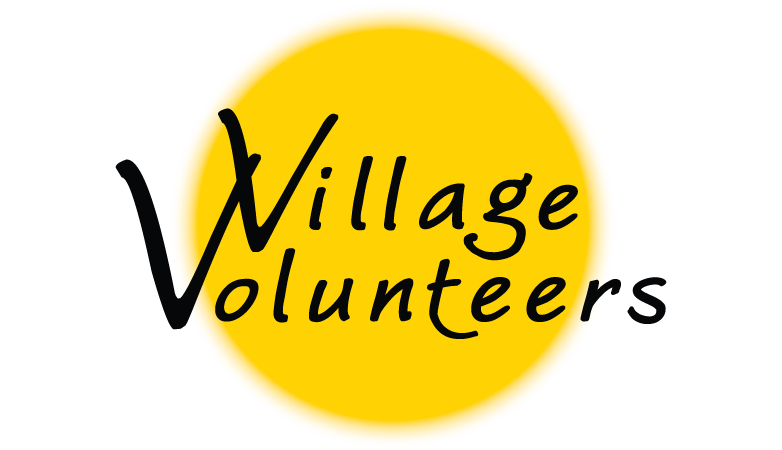BY JOSHUA MACHINGA
Common Ground for Africa (CGA) started Lenana Girls High School (LGHS) to help provide quality education for bright, motivated Kenyan girls, who otherwise would not have access to secondary education due to extreme poverty, helping them, their families and their communities find a pathway out of poverty. LGHS’s mission is to provide a nurturing and supportive environment within which girls from disadvantaged backgrounds can develop their full potential in academic and personal development and to address the imbalance in access to quality education and leadership opportunities for disadvantaged adolescent girls.
Some sobering facts about education access in Kenya
Kenya is a country of many contrasts, from its landscape to demographics, and more so, its social and economic inequalities. Access to basic quality services such as health care, clean water and sanitation, is often a luxury for many people. And education is no exception.
- While universal, free primary education was introduced in 2002, dramatically increasing enrolment at 90%, secondary education remains inaccessible for most.
- Kenya has one of the lowest secondary retention and completion rates for girls ratios in Sub-Saharan. Over the period of 2010-2015, while 75% of girls attended primary school, only 8% of girls attended secondary school.
- While the Government of Kenya has put great emphasis on education, rapidly expanding both primary and secondary school infrastructure over the past several years, access to secondary education remains expensive for the poor.
- Even in public schools, which have lower fee structures than private schools, CGA has found that many students drop out due to unforeseen costs such as having to come to school with their own furniture, pay a “construction fee”, or pay exam fees. Others get thrown out of school for having no uniform or shoes.
- Further contributing to poor retention of students is that the quality of most government and community schools is very poor, with pupil-to-teacher ratios averaging at 80:1, and as high as over 180:1 in many schools.
- Schools lack trained teachers (30% do not have relevant qualifications), basic resources such as books (ratio of 5-20 pupils to each book in many schools) and furniture, and suffer from poor infrastructure.
- Additionally, due to school overcrowding and inadequate training, most teachers teach by “chalk and talk” – having students copy from the blackboard, and memorize terms of which they have no understanding. Even in the better schools, teaching methods are top-down, and focus on rote learning rather than fostering independent thinking and problem-solving skills among students.
- The poor quality of education is reflected by the fact that between 2010- 2014, an average of 35% of students nationally failed the KCPE exams (primary), and 85% of students nationally scored ‘C’ grade in KCSE (secondary exam).
- Sadly, girls have a greater struggle: Due to social and cultural factors such as high burden of domestic tasks at home, girls perform on average almost 6% lower than boys on tests, and in some regions 20% lower; and drop out at higher rates than boys. Becoming domestic servants (often unpaid or underpaid), engaging in transactional sex, marrying early, and getting pregnant are common scenarios in these young teenagers’ lives. Sadly, strategies to improve gender equity in education have focused on improving test results such as through lowering the pass rate for girls, rather than addressing these root causes of gender inequity in education. Quality education that provides a safe space for girls, relevant skills such as agriculture/gardening for food security, leadership development including HIV/AIDS and early pregnancy prevention, and entrepreneurial and business skills through methods that stimulate critical thinking and student participation is essential to help girls perform well, stay in school and overcome poverty. Furthermore, boarding facilities are essential to reduce risk to girls and provide them with ample and safe space to grow, develop and learn. In one CARE study in the western part of the country, more than 90% of girls complained about a lack of toilet facilities, a major factor in girls missing or dropping out of school once they reach puberty. All of these are critical hindrances to girls’ education.
How does LGHS address issues around secondary education?
issues around secondary education?
It’s quite simple: LGHS is responding to the inequitable access to and poor quality of education opportunities for Kenyan children, especially for girls in poverty. Our broad objectives are:
- To provide high quality, academically challenging secondary education for Kenyan girls through development of a boarding school.
- To provide necessary financial, material and social support for orphaned and other vulnerable girls to attend and perform within in the school.
- To foster development of healthy self-esteem, independent thinking, decision-making and life skills among students.
- To adequately prepare students for academic success, through English language instruction, and remedial “catch-up” programs as necessary.
- To enable students to explore and express their creativity through art, music, theater, drama and other venues.
- To promote social and environmental consciousness and a spirit of volunteerism and social action among students through community projects.
- To encourage parental and community support for and engagement in school affairs and education of students.
LGHS Programs
CGA, in partnership with several community groups, is constructing and developing Lenana Girls High School (LGHS) in Kitale, Kenya, a secondary boarding school for vulnerable Kenyan girls that fosters the development of strong values, healthy self-esteem, and independent thinking skills among its students. We have 3 main goals for the five-year period, between 2014 & 2019:
- To be a model for educating vulnerable girls
As of the end August 2015, LGHS is educating 56 Kenyan girls who would otherwise not be able to attend secondary school. The secondary boarding school seeks to be a center of excellence for teaching, learning and leadership development for marginalized girls in both academic and life skills so that they will be able to provide for themselves and live fulfilling lives after school. Teachers at the school are trained in participatory and experiential methods of teaching. Class sizes are limited to 30 students, and there are lockers, chairs, books and school equipment for each girl, providing an excellent learning environment. The Kenyan national curriculum is followed, but the students are also taught life skills, including business skills and entrepreneurship. The school provides supportive s afe space for girls to learn, diverse and stimulating extracurricular activities, community outreach and social responsibility opportunities, and emphasis on HIV/AIDS and early pregnancy prevention. LGHS girls are taught the principles and techniques of GROW BIOINTENSIVE™ gardening, which they apply to their own gardens at Pathfinder Academy. The school is temporarily housed here as we fund raise to begin construction of its campus. The girls are thriving at all levels of development, with growing confidence and increased leadership skills displayed in the classroom, during extracurricular activities, and in mentoring of fellow students.
afe space for girls to learn, diverse and stimulating extracurricular activities, community outreach and social responsibility opportunities, and emphasis on HIV/AIDS and early pregnancy prevention. LGHS girls are taught the principles and techniques of GROW BIOINTENSIVE™ gardening, which they apply to their own gardens at Pathfinder Academy. The school is temporarily housed here as we fund raise to begin construction of its campus. The girls are thriving at all levels of development, with growing confidence and increased leadership skills displayed in the classroom, during extracurricular activities, and in mentoring of fellow students.
- To begin and complete the infrastructure for a secondary boarding school for more 200 girls
Currently, LGHS is fund raising to begin construction of classrooms, dorms, kitchen, labs and a multipurpose building to accommodate students, a matron and a headmistress. These buildings will be solar-powered, have rainwater harvesting, well water powered by solar, and an extensive garden maintained by the staff and students.
- To achieve 100% self-sufficiency through school-run businesses
CGA aims to achieve financial self-sufficiency for LGHS by setting up school-run, income-generating businesses, whilst integrating running the businesses into the curriculum so that the students learn business skills and entrepreneurship. This positions LGHS as a destination for cross visits by other schools throughout East Africa seeking to learn how to develop school-run businesses for sustainability and learning purposes. After in-depth research and marketing analysis on local project opportunities, GROW BIOINTENSIVE was identified as the strongest first project for LGHS to implement. The farming project is particularly relevant when considering the current food security situation in Kenya, causing significant food cost spikes. This project will help maintain food security for the school and serve as a profitable income generating project.
It will certainly be an uphill battle for LGHS’ vision to be realized, but our mission and vision for such a girls’ school in Kenya is resounding with the global social call for women’s empowerment and poverty alleviation. And we are determined and focused to achieve our goals.
